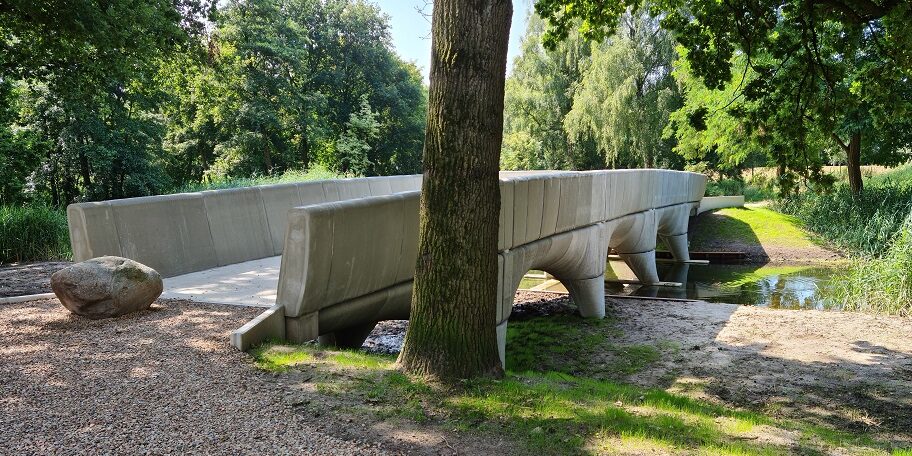The bridge was printed layer by layer in the concrete printing factory of Saint Gobain Weber Beamix and realised by the construction group BAM. It is not only the longest, but also the largest concrete bridge in the world for which the architect had complete freedom. Michiel van der Kley was able to work freely on the design and was not restricted by the material or traditional processes, such as concrete formwork.
Because the span is not constant everywhere and therefore the changing weight of the structure had to be taken into account, the choice was made to divide the bridge into printable parts. A parametric model – based on data – was used to generate the final design.
Faster and more flexible
In theory, printed bridges can be built much faster than ordinary bridges, with more flexibility and more room for personalised designs. They are also more sustainable, as less concrete is needed. The ambition of the partners in this innovative project is for 3D concrete printing to eventually become a sustainable construction method that can be used for the production of bridges and houses, among other things.
That is also the reason why Rijkswaterstaat, together with designer Van der Kley, took the initiative for this project. They donated this special bridge as a permanent reminder to the municipality of Nijmegen in honour of its election as European Green Capital 2018.
Unique bicycle bridge
The project is unique because the bicycle bridge has been designed with complete freedom of form, thanks to research at Eindhoven University of Technology and the further development of 3D concrete printing technology. The new appearance in de Geologenstrook park is characterised by its round and wavy shapes.
Bas Huysmans, CEO of Saint Gobain Weber Benelux: “This 3D-production technique delivers savings of up to 50 percent in materials, because the printer only deposits concrete where it is needed for structural strength. 3D technology is maturing and is becoming a serious option for faster, more sustainable and cheaper construction of, for example, bicycle and pedestrian bridges.”
Theo Salet, professor of Concrete Structures, TU Eindhoven: “The printing of concrete has enormous growth potential. We use less raw materials and can drastically increase the construction speed. In the future, we want to make concrete more sustainable and also reuse it. There is much more to achieve. I am also proud that the knowledge developed has found its way to the industry so quickly.”
Alderman Bert Velthuis, Nijmegen City Council: “The city of Nijmegen is very honoured to receive this innovative 3D-printed bridge. We are a city of bridges, and this special, innovative bridge is a wonderful addition. The bridge leads to connection: in the design and construction phase it connected the different partners, and from now on the bridge connects our residents.”
Michiel van der Kley, designer: “I found it especially important to show where we stand with 3D-printing technology. The design is inspired by a shape that arises in nature because it has to absorb a certain force in the most efficient way, and now translated into a digital process. With this shape we have made 3D-printing of concrete objects more interesting again. ”


